I'm trying to create a circuit with two loads in parallel ( essentially piggy backing one circuit on the power supply of the other ). Circuit 1, the main circuit requires ~900ma at 12v. Circuit 2, requires ~70ma at 5v. To step down I'm using a buck regulator that provides 300mA at 5v. The main supply is 12v DC rated for 900mA, but in reality is providing more like 1.3A. If I connect the circuits in parallel without balancing with resistors, all the current flows through circuit 1 ( its load will consume all available current ).
Now, correct me of I'm wrong, but I think I should add a resistor to each of the two circuits to manage current. So circuit 1 should get 12v / 0.9a = ~13 ohm. For circuit 2 though, I'm umsure how a buck regulator functions in this context. Should I add a 70 ohm ( 5v / 0.07a ) resistor after the buck regulator, or a 170 ohm ( 12v / 0.07a ) before the regulator. Or would both have the same effect?
Or perhaps I have it all wrong, so any advice appreciated. Pseudo circuit attached:

======= UPDATE 1 ======= Circuit 1 is a terminal for a scale unit. So logic board, power to a high capacity battery and a display, and excitation for the load cell itself. All encapsulated.
Circuit 2 is a rs232 converter and bluetooth chip. I took the 1.3A reading across Vin and Gnd with just the terminal and buck converter in parallel. I'm not sure how to resolve this difference, essentially the DC transformer supplied with the terminal is rated at 12V 900mA so that was my assumption on the load of the terminal. I thought 70mA was probably not going to go missing.
======= UPDATE 2 ======= Based on Peter and Photons advice, and the discovery that I had misused my multimeter and blown the circuit by connecting the two probes in parallel (across the circuit) and not in series, I have now managed to connect everything up correctly and it works fine (as per the diagram with no additional resistors).
I'm not sure what the actual load from Circuit 1 is until I replace the multimeter's fuse, but it is less than the 900mA the supply is rated for, so the addition of ~70mA on Circuit 2 is not a problem and works fine.